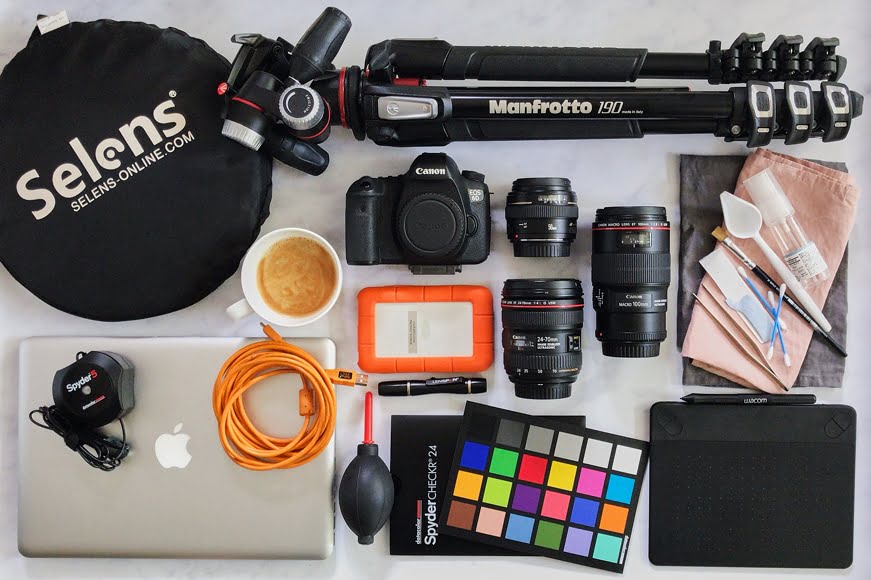








Monica Jiandani
Food | Last Updated: August 27, 2021
I’m Monica Jiandani, a Manila-based food photographer. Photography is all about telling a story and I tell my story through food. There are many ways you can add a visual narrative to your food photo. I do this with the use of light, props and focusing on details of the food that make it enticing.
Sometimes, it’s as basic as showing the process of making the dish. My objective is to pique the viewers curiosity through my images, trigger a sensory memory and inspire them to try that food.
My graphic and web design experience, combined with my culinary background, made my transition to food photography seamless. I have a love and deep understanding of food and how it behaves, which is a great advantage as a food photographer.
I enjoy trying new ingredients and cuisines and learning the traditions behind them. This often sparks the creative process for me.
When photographing food, you need to be as quick as possible to capture the food or dish while it is at its freshest before things start to wilt or melt. Being comfortable and confident with your gear is key to getting the shot.
Currently, I use a Canon 6D which is a great full-frame camera for its price point. It does really well in low light situations, giving me clean images at higher ISOs. This is particularly helpful when I want to take some travel shots at night.
I pair my camera body with a few of my favourite lenses, depending on what I’m shooting and the story I want to tell. I tend to stick to primes for their sharp image quality and lens perspective.
Canon 50mm f1.4
I use this lens when I want to show more of a table scene or do a 90° overhead shot. It is also the lens I tend to use when I want to take some stunning photos of produce when I go to the farmer’s market, or when I go on holiday. It’s light enough to walk around with and gives me excellent quality.
Canon 100mm f2.8L
This lens is my favourite of the lot. If I was stuck on a desert island, this would be the one lens I’d want to have with me. It is fantastic for capturing food in great detail, and the quality is absolutely stunning. This lens is ideal for portraiture as well as there is no distortion.
Canon 24-70mm f4.0L
Though I hardly ever use it these days, this is a great all-around backup lens for food photography to have in your camera bag. With this lens, I have the choice to shoot at a wide-angle at 24mm, all the way to a 70mm macro.
My Manfrotto 190 tripod with a Manfrotto MHX-PRO3W ball head
is some of the most valuable photography equipment in my arsenal. A good tripod ensures that I avoid motion blur, enables me to shoot using a slow shutter speed when the need arises, keeps my composition consistently in check and gives me a free hand when working on a pour or action shot.
This particular Manfrotto tripod has a centre column that releases, tilts and extends to a 90° arm, allowing me to position my camera to take overhead shots. I always make sure to use a counter weight to secure everything and so that nothing tips over.
I use a Rimelite i6 mono head strobe, a generic octabox modifier and occasionally a scrim, to light my food or set. Shooting with a strobe gives me the freedom to shoot at any time of the day, and in any given situation or location. I enjoy the control I have to shape the light to how I need it for the shot. It also ensures there is consistency between all the images.
Tethering to my 13-inch MacBook Pro with a Tether Tool cable
is very important to my work flow. Using the latest Capture One Pro
software enables me to see the images on a big screen, work on my composition, style in live view, and triple check that my images are always tack sharp.
I do the majority of my processing on Capture One Pro and I do some minor clean-up to composite work on Photoshop CC.
For every layout, I use my Datacolor Spyder Checker 24 to make sure that my white balance and colour accuracy is spot on for everything I shoot. My monitor is also calibrated using a Datacolor Spyder Pro 5 Monitor Calibration System
.
All my images are backed up and doubly backed up on my LaCie Rugged portable hard drive.
Other essentials in my kit are:
Selens 5-in-1 Triangle Reflectors with Grip
This always comes in handy to bounce or subtract light, but more often than not, I use the diffusion part of this 5-in-1. The grip handle makes using this reflector a lot more convenient when shooting.
LensPen Ultra Lens Cleaner and blower
These two cleaning tools ensure that my lenses are always free of dust and finger print smudges.
Wacom Intuos Art Pen and Touch Tablet
I use this when I work on post-processing the images, especially in Photoshop. It allows me to be precise and prevents any muscle cramping in my hands when I do editing for long periods.
Styling Kit
This is just a basic kit of tweezers, a paint brush to brush away any crumbs or dust, a spray bottle, Blu Tac, cotton swabs, a drizzle spoon and linen props.
Most importantly, copious amounts of coffee and great music playing from my Bose Soundlink Mini II.
www.monicajiandani.com | @monicajiandani

Check out these 8 essential tools to help you succeed as a professional photographer.
Includes limited-time discounts.












